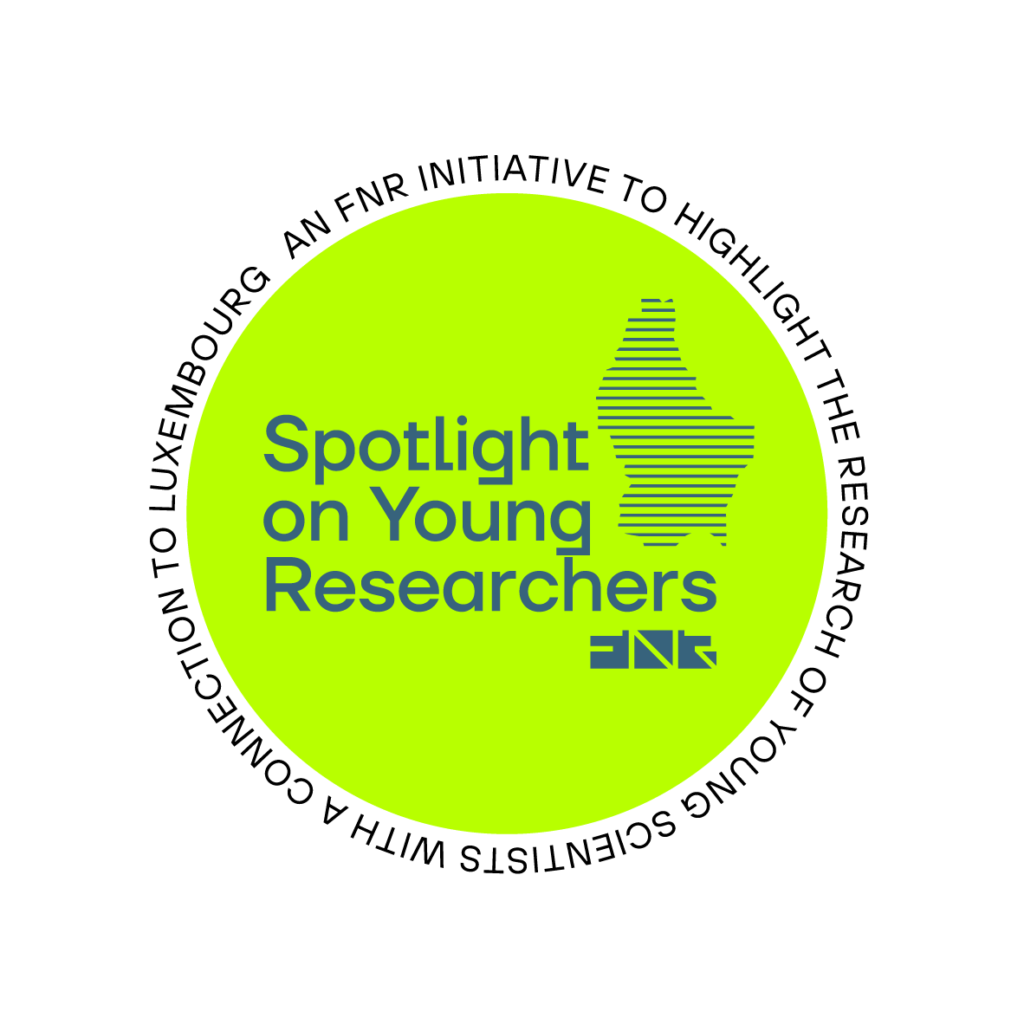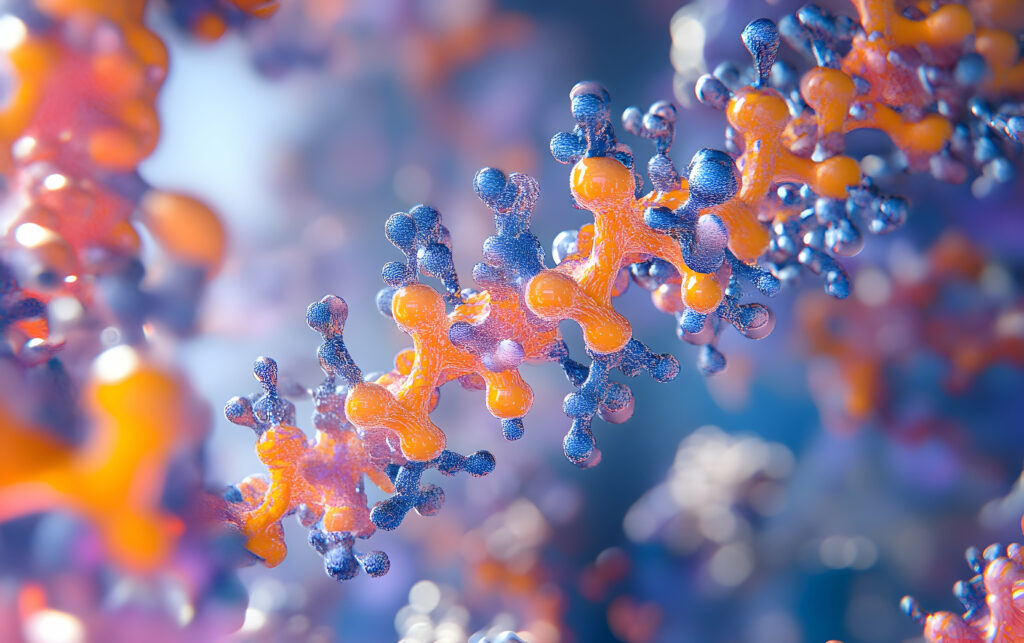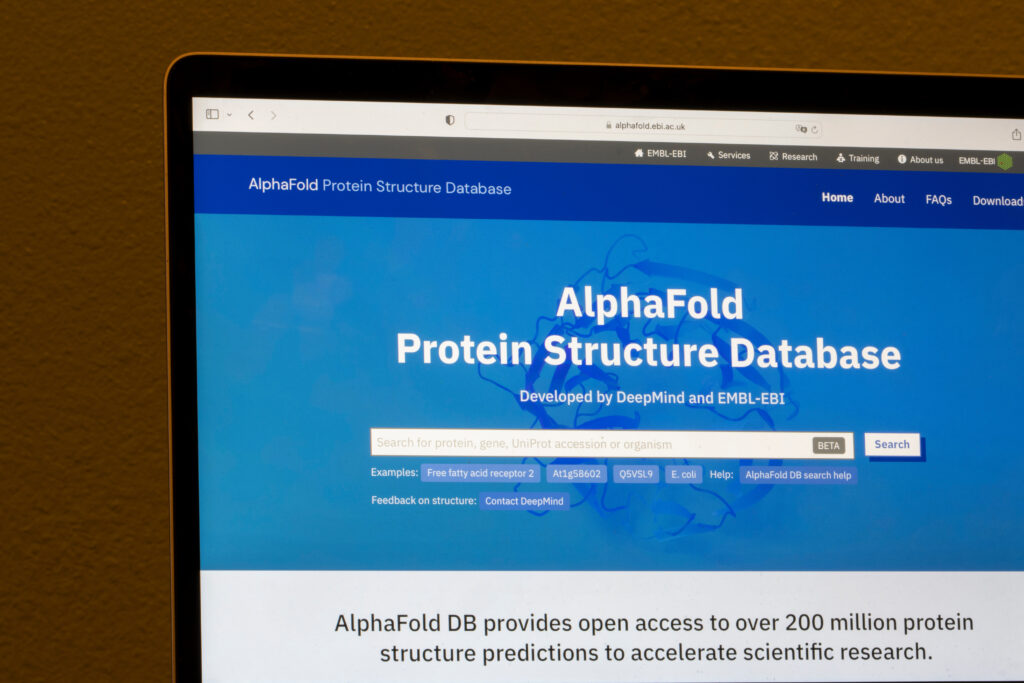BACK TO RESEARCH WITH IMPACT: FNR HIGHLIGHTS
Proteins are the building blocks of life: they play an important role in metabolism, immune defence and DNA replication. Their structure can also provide insight into many diseases – but predicting the structure has its hurdles. Researchers, such as statisticians, are developing new ways to tackle this challenge.

The function of proteins is determined by their 3D structure, a structure resulting from complex folding processes. Proteins are comprised of amino acids, and biology faces the challenge of predicting this 3D structure based on sequence of the amino acid.
Why is there such interest in predicting the structure? There is a connection between misfolded proteins and diseases like Alzheimer’s, Parkinson’s, as well as certain cancers. Therefore, accurate structure prediction is crucial for medical and pharmaceutical research.
“In recent years, protein structure prediction has seen major breakthroughs,” explains Sophia Loizidou, a statistician and PhD candidate at the University of Luxembourg.
“Deep learning models like AlphaFold, whose lead scientists won the Nobel Prize in Chemistry in 2024, have drastically improved accuracy, solving protein structures that were unknown for decades. In statistics, researchers have developed distributions to model two angles, in particular the dihedral angles, phi and psi, which are essential in describing how protein chains fold in 3D space. These angles are crucial for determining a protein’s shape and function. ”Sophia Loizidou Statistician and PhD candidate at the University of Luxembourg

Despite advances, open questions remain in the areas of dynamics, mutants, and accuracy, the latter one especially in predictions in multidomain proteins. Aside from this, RNA folding presents a deeply complex and still unsolved question.
Coming up with statistical distributions simultaneously modelling multiple angles is a difficult endeavour and developing models that are both accurate and easy to use, all while effectively fitting the data remains a significant challenge for researchers.

“In my research we are addressing multiple aspects of the problem. One key focus is developing a new probability model on the three-dimensional torus, allowing us to simultaneously capture and analyse three angles. This is particularly important because existing statistical models struggle with complexity and usability when handling multiple angles at once. ”Sophia Loizidou Statistician and PhD candidate at the University of Luxembourg

“Our proposed model is not only easier to use but also highly flexible, making it a valuable tool for structural analysis. It also exhibits other properties that are considered advantageous for such models. Additionally, we are working on a statistical symmetry test that applies to any number of angles, providing deeper insights into protein folding patterns.”
Sophia Loizidou is a statistician and PhD candidate in the ‘MATHCODA’ PRIDE DTU at the University of Luxembourg.
More about Sophia Loizidou
Describing her research in one sentence
“New statistical methods on the torus (donut shape) for protein structure prediction.”
On her research – peer to peer
“In my research we are proposing a novel distribution, namely a copula, on the three-dimensional torus, that possesses a lot of advantageous properties, such as simple normalizing constant, flexibility, known form of marginal and conditional distributions and simple random variate generation. We are also developing tests for symmetry on the hyper-torus, in cases when the symmetry centre is known or unknown. The tests derived are asymptotically optimal and computationally efficient, offering fast numerical implementation.”
Describing the researcher she is
“I am a dedicated researcher driven by curiosity and a passion for solving complex problems. My interest in statistical modelling led me to this field, where I develop innovative methods to enhance data interpretation. I chose the University of Luxembourg for its international environment and this research group for its interdisciplinary research focus.”
What she loves about science
“I enjoy the process of exploring new ideas and tackling intricate challenges. Research allows me to challenge existing boundaries and push the limits of what we know. I also appreciate the collaborative aspect of science, where working together with others helps drive progress and leads to new discoveries.”
Mentors with an impact
“My mentors are Christophe Ley from the University of Luxembourg and Andreas Anastasiou from the University of Cyprus. They have both helped me become the researcher I am today. They have not only helped me develop essential skills, but also strengthen my self-confidence, allowing me to grow both academically and personally.”
Where she sees herself in 5 years
“Five years from now, I see myself still engaged in research, developing innovative statistical models and analytical tools with real-world applications. I aim to contribute to scientific advancements through collaboration and interdisciplinary approaches, bridging theory and practice to solve complex challenges.”
Related Funding Instruments
Related highlights
Spotlight on Young Researchers: Giving robots a more human touch
The use of robots is rising, both in industry and in homes. This is made possible by scientists leveraging artificial…
Read more
Spotlight on Young Researchers: Cancer in older people & the need for a tailored approach
Cancer in adults aged 65+ is increasing, raising pressure on healthcare systems worldwide, creating economic and social burdens for families…
Read more
Spotlight on Young Researchers: A behavioural science approach to financial misconduct
The rapidly evolving risk landscape financial institutions navigate has brought uncertainty and a risk, making them vulnerable to misconduct and…
Read more
Spotlight on Young Researchers: An eco-friendlier approach to plastics
Polyurethanes (PUs) are widely used plastics, produced in large quantities each year, and found in products like foams, coatings, sporting…
Read more
Spotlight on Young Researchers: Adapting Earth technologies to function on the Moon
Over 50 years after the first Moon landing, interest is growing in returning. What was the case in the 1960s…
Read more
Spotlight on Young Researchers: Towards fair health for all
Access to essential health services is considered normal in high-income countries, while they are out of reach for many in…
Read more